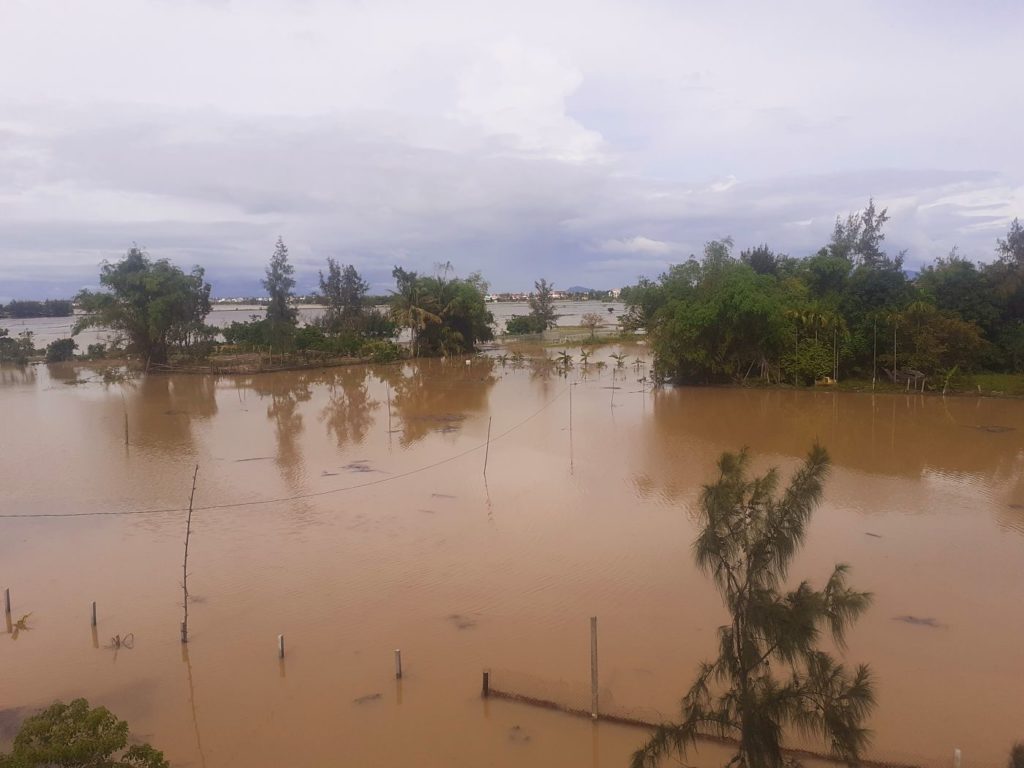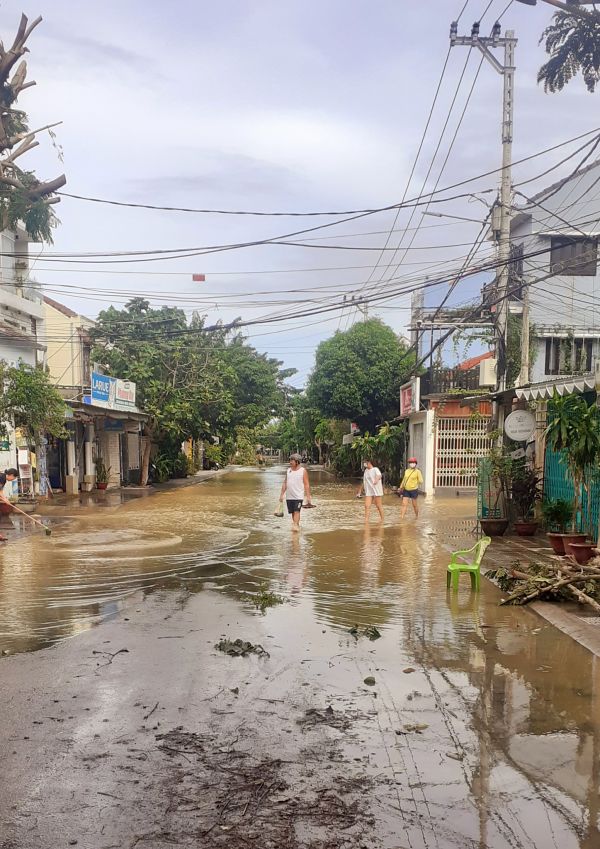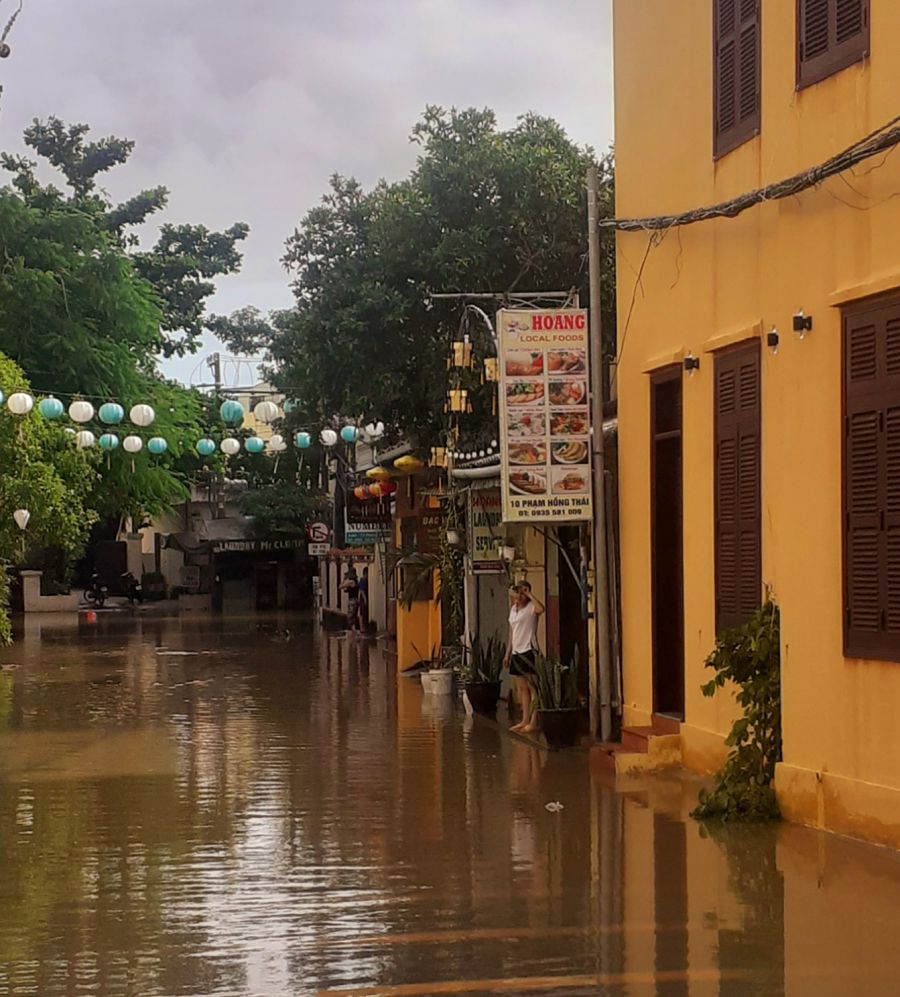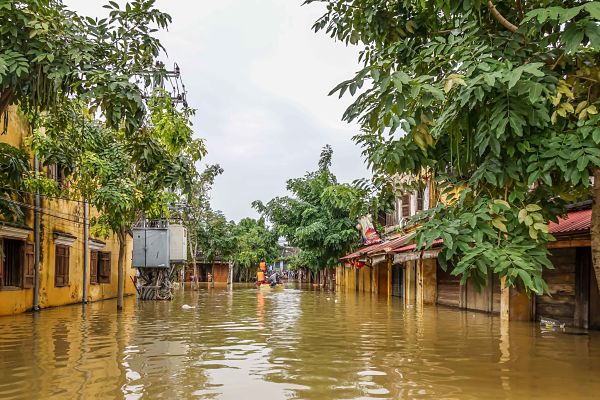Just after Hoi An experienced the first big storms of 2020, we spoke with two local business owners about their experiences – the preparation, clean-up and comparisons with previous floods. Tran Thanh Duc has three restaurants in the Old Town – Mango Mango, Mango Rooms and Mai Fish – whereas Travis Fennell’s Salt Pub and Beachside Boutique Resort are on the coast.

Pre-Flood Preparations
Owning a business in an area prone to flooding means having preparations in place and so you can be ready at a moment’s notice. Duc advised that when the dams close to Hoi An get too full, the authorities will give just 6-10 hours’ notice.
Combined with the rain and high tide, ‘a flood can form as fast as 3-5 hours! This is when you make your move. We have a specific scaffolding system, made according to the height of the area of town and location of our restaurants. So we are able to load heavy equipment onto this that we cannot carry upstairs.’
For Travis, living by the coast, it’s a similar experience – lifting equipment off the ground to minimize damage. ‘The water levels don’t rise here like they do in the Old Town, so we’re lucky. But there’s also the spray from the sea to contend with, and nothing to get in the way of the wind coming off the ocean. The weather affects everyone, so preparation means damage-limitation – we know everything’s going to get wet!’
The Resulting Floods
Duc explained that, being so close to the river, all the restaurants and bars are closed, barring those on higher ground. Flooding is a huge part of having a business in or by the Old Town and with most people having years of experience living there, the town is always ready.
By comparison to previous years, Duc judged last week’s experience to be ‘a mild flood. We had been anticipating the rain and so we moved our restaurants’ equipment 24 hours prior! There was barely any stress.’
Preparation is everything!
Comparisons with Previous Years
Compare this to the worst flood that Duc remembers, in 2007. ‘The flood came at 2am as a surprise, as there were no warnings that the dams would release water! We and the rest of the town didn’t move anything from the shops, the water topped 1.6m inside and we basically lost most of our equipment and supplies! It took us ten days of cleaning and resetting before we could open again. A big loss.’
Travis remembers a few bad floods in Hoi An, from 2017 and the early 2000s, yet his worst experience came when living in Hanoi. ‘One year a dam broke, not far from the Old Quarter. Our house, and everyone else’s in the area, sat in half-a-meter of water for nearly a week.’
The Big Clean-Up
Anyone who went on the first dry (and sunny!) day following the first floods in 2020 will have seen the big clean-up that takes place once the water subsides. It’s a huge job, as Travis explains:
‘We’ll sweep, deep clean, then disinfect with spray, often more than once. If the restaurant’s been sitting in water we can’t afford to take any shortcuts. Often the longest job is to repair our garden and beach space, which bear the brunt of the wind, spray and sea. And the ocean will reclaim some of the sand during a big storm. The Vietnamese people have an amazing spirit however, and we’ve learned from them just to get on with it – and get the clean-up done!’
As with Travis, it’s an ‘all hands on deck’ solution for Duc too. ‘We use a broom and water pump to flush out the last of the mud and flood water from inside. The whole team gets involved from start to finish, sometimes from 5.30-6am – we follow the water level as it comes down! Sometimes we’ll start at 5am and finish at 10pm. Brooms, pumps, brushes…then food and beers after!’
Local Knowledge is Everything!
For anyone thinking of opening a business in or close to a flood area, local knowledge is everything. Travis advises that ‘it’s essential to have a game-plan in advance. The flooding is going to happen, so do your homework – you can’t just sit there and wait.’
As Duc advises, you need to know your neighbors as they’ll have knowledge of how to deal with the flood. Your business needs to be forever on standby for when the warning comes. ‘Have the necessary boxes to put things in, have a scaffolding system to move your big equipment, and have your team ready at 30 minutes’ notice, at any time during the flood season.’
Travis also mentioned that many Vietnamese business owners see being flooded as a sign of good luck for the future – ‘it’s essential to look forward, not back, and focus on 2021 being a good year.’
Insurance
A lot of people wonder if the businesses are insured to the hilt, or if it’s even possible to get insurance in an area so prone to flooding. With so many of the businesses being small and family-owned, it seems the majority prefer to manage the situation themselves. Be prepared well in advance and any damage can be kept to a minimum.
With more storms currently forecast for Hoi An and the central region as a whole, it could be a good few weeks before the town returns to normal. A big thank you to Travis and Duc for their unique insights on the flooding season, and here’s to a safe rainy season for everyone.



